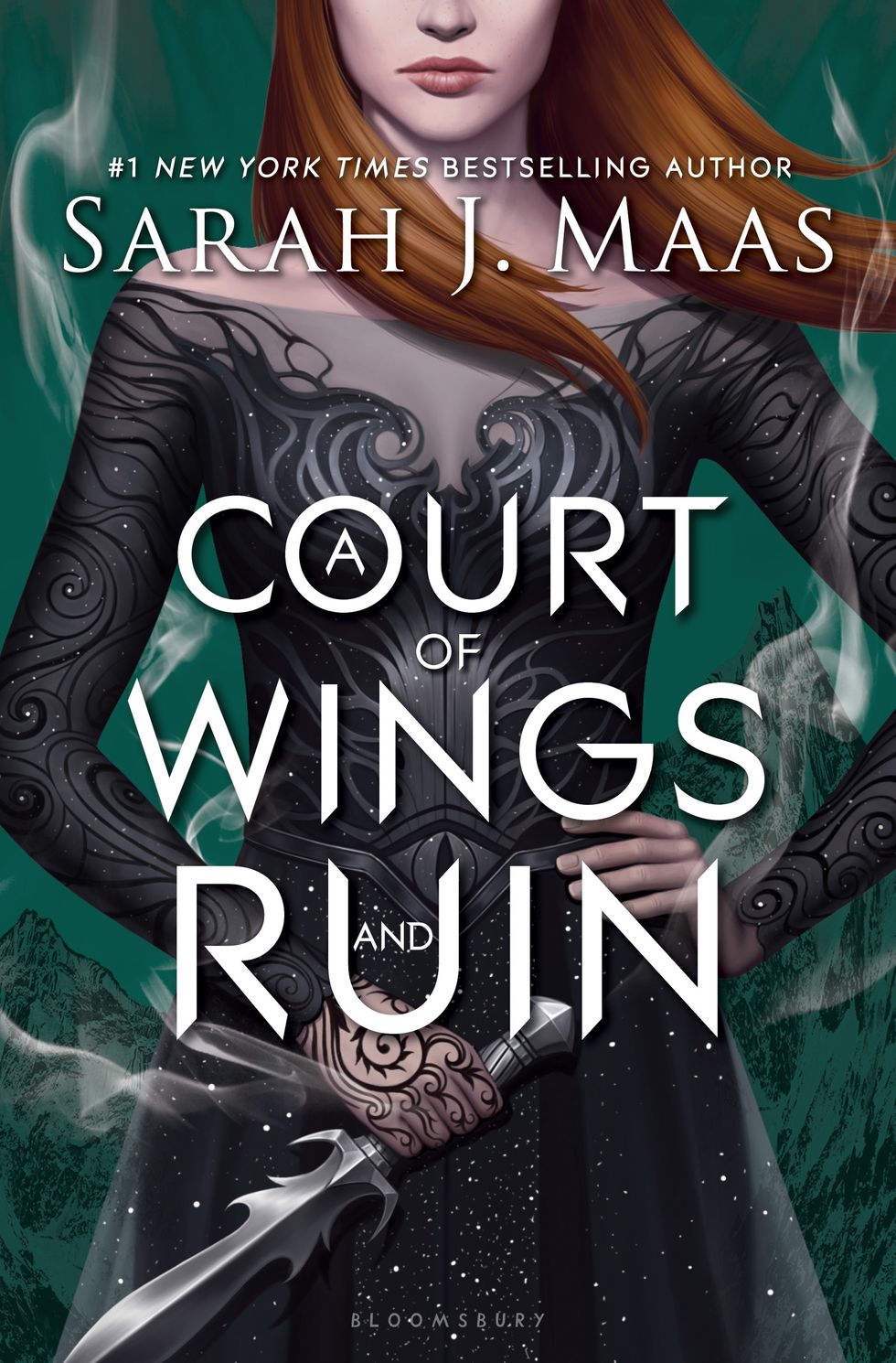This article contains very minor spoilers.
"A Court of Wings and Ruin" is the third installment of Sarah J. Maas's "A Court of Thorns and Roses" trilogy. The story picks up where "A Court of Mist and Fury" leaves off with Feyre returning to the Spring Court to find out Tamlin's maneuverings with the King of Hybern. But little does Tamlin know that he has just led a very pissed off High Lady of the Night Court into his territory.
The plot is action-packed from the beginning, and for this reason, I found it impossible to put this near 700 page beauty down. Maybe that's why I managed to read it in under twenty-four hours of its May 2 release and have already started reading it again.
While the first two books of the trilogy were more romantically driven, ACOWAR tends to focus more on action, beginning with Feyre's deceitful shenanigans in the Spring Court. It is while we are there that we learn more about the development and control of her powers and how she uses them to put her plan of bringing down the Spring Court into action. But we also get a chance to learn a little bit more about the world outside of Prythian from some new characters from Hybern while we read about Feyre's time in Spring.
These new characters, as well as many more introduced throughout the story, help the world that Maas has created expand significantly. We are no longer trapped inside one of two places -- the Spring Court and Night Court -- but rather get a chance to explore many different courts and learn about their High Lords. We learn more about creatures like the Bone Carver, the Weaver, and the Suriel. And we learn about places outside of Prythian and who resides there.
And while this book is based more around the looming war with Hybern than the relationships, characters still remain the best part. Maas managed to give each new character their own magnificent personality that made the reading very enjoyable, even in some of the slower parts of the novel. ACOWAR delves beyond the two main character system that we saw in the previous two books and takes us into the stories and minds of those that surround Feyre and Rhysand. And some fan-favorite characters that did not play a major role in ACOMAF -- yup, I'm talking about Lucien -- come back and play a major role in this book.
We also get to see much more diversity. Readers learn that two of the High Lords we are introduced to as well as a member of the Inner Circle are a part of the LGBTQ+ community. We also get more characters who are not white, clearly have different cultures, and we finally get the clarification that Illyrians indeed do have brown skin. Sarah J. Maas books are notorious for being white-washed and have majority straight characters, but ACOWAR steps up the diversity ten fold.
Now, there were some pitfalls to this story that I would so much like to ignore, but I cannot.
The first is the pacing. While the book did have very exciting twists and turns, there were some points that went so slow. Since a majority of the story was spent planning for the war, it started to feel a bit repetitive in the sense that I felt like I had read it before. Because I had. And then the plan got recited for a different crowd. And then another. Or some plan was thought up by Feyre and later recited aloud. Plus, the conversations regarding the war were so dull that I did not feel the pull to keep reading, and almost had to force myself to get through them.
The second issue is the sexy times. Fans of Sarah J. Maas love their sexy times just as much as Sarah loves writing them, especially when it comes to Feyre and Rhysand. (Side note: anyone know where I can get myself a High Lord of the Night Court because damn.) But now that Feyre and Rhys are mated, there was no sexual tension that made the writing more interesting during ACOMAF. They are in love. Obviously they are going to have sexy time. And in this book, all of those times felt so forced, whereas in the previous books everything happened so much more naturally.
Another major point that I think needs to be made about this story is that there are spinoffs, and it is clear that Maas is setting up for them. That may make this story feel like more of a middle book because there are plot points that are not resolved completely. For Feyre and Rhysand, yes everything comes to a close. For some other though... we shall see what happens when the stories in Prythian continue in 2018 (as the back of the book so kindly reminds us).
Overall, I was enthralled in the story. It kept me guessing and there were some twists in the plot that left on on the edge of my seat, screaming, squealing, and full out sobbing (if you have read the book, you know what scene caused this). Was the finale better than the first book? Yes. Was it better than the second? I'd say no. But it was still a finale that I find myself generally happy with.
Reviewer Rating: 4/5 STARS























